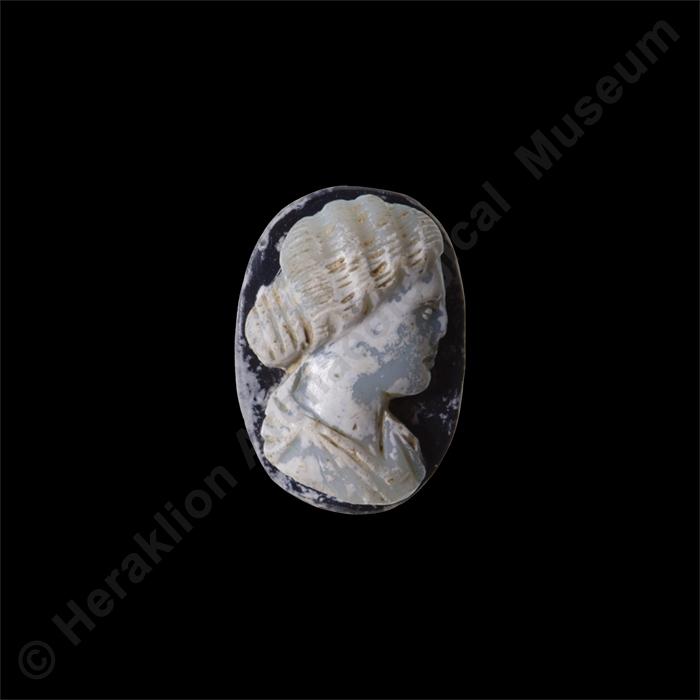Ring stone (cameo)
Σ-Κ2051
Stone (Chalcedony)
Intact
Height: 1.7 cm.
Astritsi, Pediada
Roman period:
2nd c. AD:
Gallery:
XXIICase:
219Exhibition thematic unit:
Classical - Hellenistic - Roman period (5th c. BC-4th c. AD). The CemeteriesJewellery
Description
Cameo ring stone. The white layer on a dark blue ground depicts a female bust facing right. The hair forms wavy locks that run over the head, covering the ears and ending in a bun tied with relief ribbons. The woman is wearing a chiton secured at the shoulders and falling in pleats on the breast and neck. The beauty of the portrait, together with the hairstyle, mean that it resembles busts of Faustina the Younger (161-176 AD), the wife of Marcus Aurelius. The cameo technique produces a relief image, usually in a different colour to the underlying stone. Its function is purely decorative, since it cannot be used as a seal. Cameos appeared in Greece in the 3rd c. BC. Probably of Alexandrian origin, they were mainly developed by the Romans, who invented glass cameo.Bibliography:
Unpublished. General bibliography: J. Spiers, Ancient Gems and Finger Rings, Catalogue of the Collections, The G. Paul Getty Museum, Malibu California, 1992.Author:
M. K.Photographs' metadata
